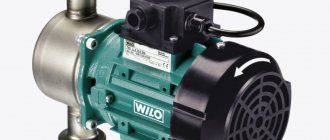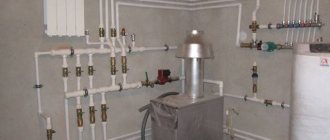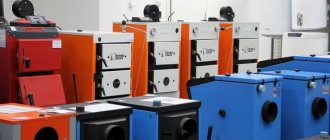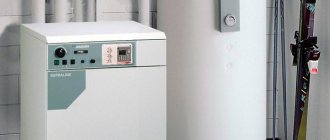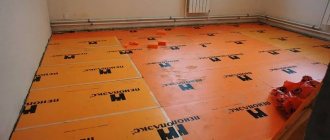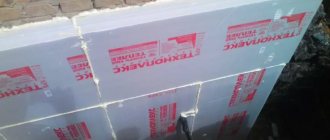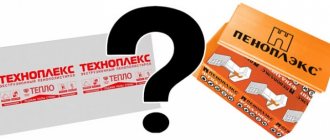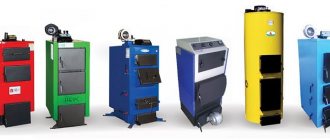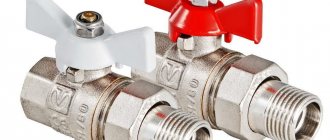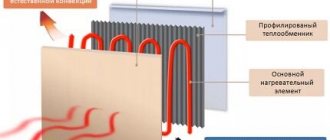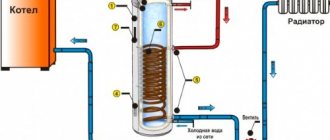One of the most expensive items for maintaining a house or apartment is rightfully considered heating costs in the autumn-winter period. Every year new heating technologies appear - from heat pumps, ultra-efficient electric boilers to double-layer film heated floors and everything in between. One of the latest interesting developments in the field of heating technologies was the appearance of Revolts plasterboard panels, which a large number of experts call one of the most effective and safest for the home.
New device, what is Revolts
In appearance, Revolts panels are very similar to a regular square-shaped plasterboard sheet with a hanger and a smooth front surface. From such sheets or single heating elements of Revolts plasterboard heating, you can assemble an entire wall, line the ceiling, or install single heaters in the coldest rooms of the building.
According to the manufacturers, the heating system is based on the long-known PLES technology - heating using thin graphite films on a polymer film.
Structurally, the Revolts plasterboard panel consists of the following elements:
- Heating composite fabric based on metal-graphite film tracks;
- Gypsum matrix, inside of which a heating film is laid;
- Thermal insulating substrate applied to the back side of the revolts panel;
- Electrical wiring and suspension system built into the heating sandwich.
Important!
Revolts heating panels do not require special conditions or fireproof elements, since in operating condition the temperature of the plasterboard surface rarely exceeds 90°C. A fairly simple and lightweight design that does not have moving parts, hydraulic and air circuits, open heating coils or other elements that consume oxygen in the air or reduce humidity in the room.
How to install a Revolts heater system
The most common installation option is ceiling; experts recommend installing plasterboard boards on the ceiling, as is done when installing conventional ceiling cladding.
The main requirement for installing Revolts heating panels is to insulate the concrete ceiling, otherwise half of the heat will go into the concrete. In this case, it is not necessary to sew on foam plastic boards; it is enough to nail a layer of OSB boards onto the dowels, after which you can install the profile and fasten the Revolts heaters with self-tapping screws, like regular drywall.
The second option involves installing heating panels on the walls of rooms; most often, the heaters are mounted at a height of 20-30 cm above the floor, like conventional convectors or radiators.
In this case, there is no loss of useful space due to the suspension of heat convector radiators, you can get rid of pipes, and there is no need to break through channels for laying separate wiring, as when using any electric heaters. In this case, there is no need to lay out the entire ceiling or walls with Revolts panels; for one square of usable area of the room, 0.7 square meters of heating surface will be required, or vice versa, 1 m2 of drywall can heat 1.3 m2 of the room.
The panels can also be laid into the base of the floor covering in the same way as a warm floor. In this case, the heat transfer coefficient is reduced due to an additional layer of laminate or parquet flooring, but in general, the quality of heating increases due to more rational heat distribution.
Features of infrared drywall
The dimensions of the heating panel correspond to the dimensions of the plasterboard sheets used during installation. The panels have special markings for fastening, ensuring ease and convenience of installation. Attaching a heating panel to profiles is no different from attaching a regular sheet of drywall.
On the back side of the heating panel there are insulated terminals for connecting to the power supply.
The possibility of hidden and open installation is provided. For installation, the heating panel kit includes electrical contact leads to the front of the device, and the device itself has a hole for bringing the contacts out. In case of open installation, contacts are brought out under the plinth, providing easy access to them and without disturbing the original design of the room.
The safety of the devices during transportation is guaranteed by packaging and special placement of the devices. The devices are packaged in protective film and placed in sealed corrugated boxes in a set of 2 pieces.
effect-ik.ru
What's special about the new heating scheme
The sale of a new heating system is accompanied by very powerful advertising. Manufacturers and dealers offering to replace traditional water and electric heaters with Revolts plasterboard heating panels cite the following arguments in favor of the new product:
- The installation of Revolts heating panels is quite simple; most of the work can be done with your own hands, without the help of highly specialized specialists;
- The Revolts system can be installed even in damp rooms, since the heating metal-carbon film is covered with a layer of polymer and gypsum;
- Economy heating revolts are twice as effective as conventional heaters, convectors, radiators, the average electricity consumption of one panel is 100-300 W/h;
- Thanks to the design features, it is possible to individually regulate the heating and heat transfer of any sections of the walls in the room, thereby creating the opportunity to save on night mode and in the absence of owners in the house;
- Revolts panels have an almost unlimited service life.
It is clear that no technical system has an unlimited resource, but the manufacturer’s specialists believe that a plasterboard sandwich can withstand a very large number of heating and cooling cycles.
In addition, most selling companies believe that Revolts plasterboard heating panels can be used as a finishing material, like regular drywall. After installation, the surface of the Revolts panels can be painted, applied with decorative plaster or tiled, like a regular wall. Since heating using the new system is used for a fairly limited period, it is quite difficult to reliably confirm or refute the service life of the heaters, but preliminary conclusions about the advantages and disadvantages can be drawn from reviews of Revolts plasterboard heating panels over the last couple of years of operation.
Advantages and disadvantages of electric infrared heating
To make a final decision on choosing a heating system for your home, you need to carefully study the pros and cons of infrared heating.
Why is new generation heating attractive?
- Infrared heat warms objects and people's bodies without wasting electricity on heating the air. The efficiency of radiant heaters is 90%.
- IR devices do not dry the air or burn oxygen, which is especially valuable for people suffering from respiratory diseases.
- Radiant systems do not take up much space, operate absolutely silently and without convection, without raising dust during operation.
- Infrared heating of a private home allows you to save a lot on equipment installation and energy bills. Its installation does not require permits (as for connecting gas), and the energy consumption of such systems is much lower than that of other types of electric heating.
- Long-wave heating devices are absolutely safe for health.
- The absence of coolant simplifies the operation of the innovative system - there is no need to drain water, flush radiators and pipes, or worry about leaks.
Disadvantages of Radiant Heat
The most significant disadvantage is the higher cost of electricity compared to mains gas. If gas has already been installed in the house, then there is no point in completely changing the system. However, you can use IR emitters zonally as an additional heat source.
The installation of infrared elements must be planned at the renovation stage. When installing heaters, be sure to take into account the location of furniture and zoning of space. This causes minor inconvenience in cases where no renovation work is planned in the house or when rearrangements are carried out frequently.
Performance quality of Revolts heating panels
New heating technology is just gaining momentum, and criticism is already accumulating like a snowball. Undoubtedly, the idea behind using plasterboard sheet as a heating surface has its advantages:
- The heater works like the wall of a wood-burning stove, part of the heat is lost due to convection, part due to radiation, drywall does not burn, is not capable of burning or causing a short circuit;
- A plasterboard panel with a layer of heating film retains most of the characteristics of the sheet - flat surface, light weight and ease of installation;
- Lack of metal in the heater design.
In reality, if you disassemble the Revolts panel, you can see that inside between two layers of gypsum there is a transparent polymer film, which is why the surface temperature never exceeds 80-90°C. Manufacturers of the Revolts plasterboard heater attribute this fact to the heating advantages, since the material does not shield the walls and does not create a background, as is the case with electric spiral heaters.
For apartments
“REVOLTS” infrared heating panels will be a reliable source of additional heat in apartments with central heating, where walls or ceilings are planned to be finished with plasterboard.
The system will help keep you warm during the off-season and eliminate the need to constantly move floor electric heaters from place to place.
When using panels as an additional source of heating, it is enough to install several panels with a total power of 50% of the calculated power for the room.
Is it worth contacting Revolts heaters, user opinion
According to reviews, Revolts plasterboard heating has no less disadvantages than advantages, so it is important to remember them too.
The most significant problems:
- Product price;
- Difficulty of repair;
- Heat is too low.
The first and most important complaint about the operation of plasterboard heaters is the high price; a square meter of Revolts will cost 1300-1400 rubles, respectively, to heat one room of 20 m2, at least 14 square meters of Revolts will be required, which will amount to almost 19 thousand rubles. This is approximately twice as expensive as if you equip a room with a pair of conventional 1 kW convectors.
At the same time, plasterboard boards require careful handling and careful installation; if you drop the heater from the height of the ceiling, then with a high degree of probability it will have to be scrapped, since it is almost impossible to repair the monolith.
In addition, according to reviews, Revolts heating requires very competent planning. This second problem is perhaps the most difficult one consumers have to face. Revolts heating systems are classified as low-temperature systems. This means that 50-55% of the heat leaves the surface of the plaster using convection, and the device itself is more similar to a conventional water heating battery or an oil convector.
Therefore, despite the presence of a heat-insulating lining, it is still better to install the Revolts panel at a short distance from the walls, rather than install it as a cladding. All the stories about the ideal thermal insulation of the rear surface are nothing more than advertising; consumers themselves have already realized this, and often the Revolts heating plasterboard is installed by hand in the same way as a conventional electric convector.
The second half of the energy is transmitted in the form of radiation, but it is very soft and weak, so the slabs can be used to sheathe the space around a child’s bed or sofa, rather than heat the entire space. The maximum heating range of the Revolts panel is 0.6-0.8 m, which is clearly not enough.
Manufacturers of IR heaters
Many companies around the world are engaged in the production of IR equipment. The most popular among foreign manufacturers are:
- "STIEBEL ELTRON" is a German company that produces products of traditionally high quality;
- FENIX TRADING - a Czech company pays close attention to the issue of energy efficiency of its products;
- “AIR COMFORT” - the Italian concern is betting on creating a safe heating system of a new generation;
- "FRICO" - a Swedish manufacturer guarantees Scandinavian quality and places increased demands on the design of its products.
Domestic manufacturers are represented by such trademarks as Bilyuks , Peony , EcoLine , Almak . In terms of quality characteristics, the products of these brands are not much inferior to their imported counterparts.
The cost of domestic-made IR equipment is 30% lower than imported analogues, so a wide range of buyers can afford its installation
But it is worth noting that not all of these domestic devices for infrared heating are supplied complete with brackets. In addition, judging by the reviews, the operation of domestic devices is often accompanied by a slight crackling sound, which can be annoying especially at night.
You should also be wary of Chinese-made products. CE mark on their products , indicating “ China Export ”. CE mark , which stands for “ Conformite Europeenne ”.
The only difference is that in the second case the font density is a little wider and the letters are located a little further from each other. Therefore, in addition to studying the labeling, ask for certificates of conformity.
What is the real situation with Revolts panels
One of the remaining uncertain issues is the reliability and service life of Revolts. Manufacturers of plasterboard panels claim that the heating element is made of a very resistant and durable composite material. The film is not afraid of acids and alkalis, does not oxidize and does not burn out. Practical tests show the ability of the heating core of a plasterboard panel to work continuously for 10-11 years; in theory, Revolts should work almost forever.
In practice, heated plasterboard panels are subject to more difficult conditions. Firstly, the heating-cooling cycle invariably leads to the development of a large number of microcracks, both in the plaster itself and in the film material. Even metal has the ability to get tired, especially since the Revolts film heater will quickly become covered with cracks if you do not follow the installation recommendations.
Secondly, despite the manufacturer’s assurances, Revolts plasterboard panels should not be covered with any decorative materials - paint, plaster, and even more so, tiled. This always leads to “conservation” of heat and destruction of gypsum, as a building material, under the influence of water vapor. A heated plasterboard panel covered with tiles will transfer heat into the concrete and plaster.
In addition, the panels cannot be cut at your own discretion, as could be done with plasterboard sheets, so the number of heaters must be carefully balanced with the size and geometry of the room.
Scope of application of long-wave devices
Infrared emitters are widely used not only for heating private houses and apartments with permanent residence. This heat source is ideal for summer cottages, as the system is not afraid of freezing and quickly heats up a cooled room.
In summer cottages and on farms, heating greenhouses with infrared heaters is increasingly being practiced. Heat, similar in its properties to the sun, is ideal for accelerating plant growth. It is only important to maintain the correct distance from the device to the seedlings and increase it as the seedlings grow.
The garage is another place where you can create comfortable conditions for a car and a person using infrared heat, without wasting energy on heating unnecessary areas.
Radiant heating is widely used to heat office buildings, shopping centers and industrial premises. The zonal arrangement of heaters allows you not to heat areas where there are no people, and significantly save on electricity.
Advice for future buyers of plasterboard panels
Practice shows that the most suitable place for installing Revolts plasterboard heaters is the ceiling and the middle line of the walls. In rooms where most of the time is spent in a sitting position, Revolts heating panels are installed on the walls of the room so that the distance from the sofa, armchairs or bed does not exceed 80 cm.
In the kitchen, in the hallway, even in the bathroom, plasterboard heaters are placed on the ceiling. If the room is large or has very high ceilings, then plasterboard panels will be of little use; at best, you can create a comfort zone in a small area near the computer, at the table or near the TV. In such a situation, Revolts panels are significantly inferior to heated floors, both in efficiency and heating efficiency.
The maximum efficiency of Revolts plasterboard heaters is achieved in rooms with a maximum width of 2.5 m. For narrower rooms, most of the heat will simply go under the ceiling and be lost; for wider spaces, the efficiency of Revolts plasterboard panels will clearly not be enough; a zone with a lower air temperature will necessarily form in the center.
Working principle and scope of application of infrared heat
Infrared heating devices operate on a principle borrowed from the sun - the waves they emit heat objects, and the heat is gradually transferred from the heated surfaces to the air. Comfort in the room is felt already at 15 degrees, which cannot be achieved with electric convectors and water batteries. Using various types of heaters, you can not only quickly heat a building of any type, but also organize local heating of a separate area on the street.
To understand why radiant heat instantly creates comfortable conditions, it is enough to remember the sensations that arise when you emerge from the shade into the sun. The air temperature under the canopy and on it is the same, but the sun's rays heat the surfaces and they become warm even in frost.
Depending on the type of power source, electric, gas and diesel heaters are distinguished. Infrared gas heating is mainly used in large enterprises to heat warehouses. Diesel fuel is chosen where there is no possibility of connecting to other power sources. Electrical systems are ideal for residential premises - they emit long-wave rays, invisible to the human eye and absolutely safe for health.

